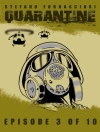The Romance of Teresa Hennert is a masterpiece of psychological realism and a still-shocking portrait of mixed motives and bad behavior . It renders a tragicomic vision of what happens when a society is suddenly deprived of the struggle that had defined it for more than a century. Written in 1922, just four years after Poland achieved independence from its neighboring empires, the novel focuses on a Warsaw community of officers, bureaucrats, intellectuals, wives, and lovers, all of them adrift in a hell of their own making—the long-sought freedom to shape their own destiny. At the center of this milieu is Teresa Hennert, whose youthful charm, modern habits, and apparent indifference to the emotional torment of those around her make her an inescapable object of their fascination and desire.
Told in multiple voices and from numerous perspectives, Zofia Nalkowska’s novel is a mosaic of dysfunction at all levels of the new Polish society, from a bumbling lieutenant who cannot stand his home life to a young Communist who believes his forebears have made a mess that only the next generation can clean up. In this world, ideological battles, personal animosity, postwar trauma, and infidelity become inextricably bound together, driving these colorful, increasingly confused characters toward corruption, suicide, and murder. Nalkowska (1884–1954), though long neglected in the West, was a central figure in the literary life of interwar Poland and was an early pioneer of feminist fiction in Central Europe. Her spare, witty prose will surprise contemporary readers with its frank sexuality and stark illustration of dreams gone horribly, humiliatingly, dramatically awry.
Giới thiệu về tác giả
Megan Thomas has been traveling to Poland frequently over the last decade. A specialist in public education in underfunded schools, she currently teaches English as a Second Language to recent immigrants in the Detroit area.Ewa Malachowska-Pasek is lecturer in Polish and Czech at the University of Michigan and is a contributor to and co-editor of the first five fascicles of the Dictionary of Polish in the Seventeenth and Eighteenth Centuries, a project of the Polish Academy of Sciences.Benjamin Paloff is assistant professor in the Department of Slavic Languages and Literatures and the Department of Comparative Literature at the University of Michigan.












